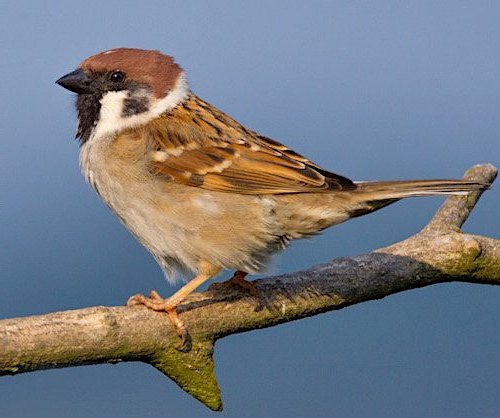Rhineland-Palatinate

Birding Rhineland Palatinate
The German state of Rhineland Palatinate borders Alsace/Lorraine in the south, Luxembourg and Belgium in the northwest, German Saarland in the west, North Rhine Westphalia in the north, Hesse in the northeast and Baden-Württemberg in the southeast. It is formed by the Rhineland in the north with the Rhine flowing through and the Palatinate in the south with the Rhine forming the eastern border.It’s landscape is characterised by thickly forested mountain chains, the most famous being the Palatine Forest in the south (Germany’s largest forest area) as well as the Eifel and Hunsrück (804 meters high) in the north. The second most important river after the Rhine is the Mosel. To the east, protected by the rainy mountainous area, is the Rhine flatland one of the warmest parts of Germany. The favourable weather conditions make this area ideal for the cultivation of figs, almonds and extensive vineyards.The city of Mainz is the state capital.
In all there are 7 national parks (about 27% of the total land surface) and approximately 500 nature reserves (total surface 370 km²) in the state. Apart from that there are 51 bird protection areas which cover about 8% of the total land surface.Three territories are of particular interest for ornithologists:The higher areas of the lower mountain ranges for species such as Hazel Grouse, Eurasian Woodcock, Tengmalm’s Owl, Eurasian Nutcracker, Common Raven and Common Redpoll.The drier areas on the edge of the Rhine flatland for species such as European Honey-buzzard, Red Kite, Little Owl, Eurasian Nightjar, Hoopoe, Eurasian Wryneck, Middle-spotted Woodpecker, Wood Lark, Red-backed Shrike, Northern Shrike, Cirl Bunting and Rock Bunting on the stony hillsides.The large wet areas (old Rhine arms, former gravel pits, fens) near the Rhine for Red-Necked Grebe, Eared Grebe, Purple Heron, Common Snipe, Common Kingfisher, Bluethroat, Savi’s Warbler, Great Reed-Warbler, Melodious Warbler, and Eurasian Penduline Tit.Other notable species are Black Woodpecker, Grey-faced Woodpecker and Crested Tit that can be found in all forest areas, and Black Stork, Collared Flycatcher, Eurasian Eagle Owl and Crested Lark, which can only be found in a few special habitats.
-
NP Palatinate Forest
InformationSatellite ViewTogether with the northern part of the adjacent Vosges Mountains in France it forms the UNESCO-designated Palatinate Forest-North Vosges Biosphere Reserve, one of the biggest forests in Europe. Birds include hoopoe, kingfisher, wheatear, black woodpecker, whinchat and stonechat. Whilst the strictly protected peregrine falcon has been resident in the rock country of the Wasgau for several decades, hazel grouse and capercaillie appear to have died out in the Palatine Forest region. Typical autumn and winter species include the brambling and chaffinch, which overwinter here and occupy the woods in large flocks.
